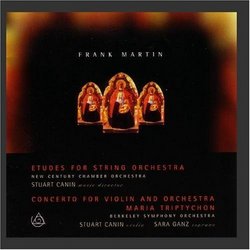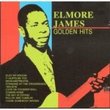| All Artists: Frank Martin & Maria Triptychon Title: Etudes For String Orchestra, Concerto For Violin And Orchestra Members Wishing: 0 Total Copies: 0 Label: New Albion Records Release Date: 11/18/2009 Genres: Pop, Classical Styles: Vocal Pop, Chamber Music, Forms & Genres, Concertos, Historical Periods, Classical (c.1770-1830), Instruments, Strings Number of Discs: 1 SwapaCD Credits: 1 UPC: 022551008625 |
Search - Frank Martin & Maria Triptychon :: Etudes For String Orchestra, Concerto For Violin And Orchestra
 | Frank Martin & Maria Triptychon Etudes For String Orchestra, Concerto For Violin And Orchestra Genres: Pop, Classical
Etudes For String Orchestra, Concerto For Violin And Orchestra by Frank Martin & Maria Triptychon |
Larger Image |
CD DetailsSynopsis
Album Description Etudes For String Orchestra, Concerto For Violin And Orchestra by Frank Martin & Maria Triptychon Similar CDs
|
CD ReviewsFine California performances of 3 Martin Masterpieces Nicholas A. Deutsch | New York, NY USA | 11/17/2003 (5 out of 5 stars) "The 3 works on this fine CD rank among the best of the great Swiss composer Frank Martin (1890-1974). What connects them is their emphasis, one way or another, on string instruments - not surprisingly, the disc is directed by violinist/concertmaster Stuart Canin. The centerpiece is Martin's Violin Concerto (1950-51), a magical work full of subtle orchestral color composed at a time when Shakespeare's "The Tempest" was very much on Martin's mind: the 1st movement even reworks material from his recent "Five Ariel Songs." In contrast, the "Etudes for String Orchestra" (1955-56) wrings maximum variety from self-imposed restrictions - only the 4 modern string instruments, no more than one "divisi" per section, no solo lines; it's one of Martin's most shapely "Classical" pieces, one which also shows his sense of humor, especially in the witty "study" for pizzicato (plucked strings). The "Maria Triptychon" (1967-68) is a setting of the "Ave Maria" and "Magnificat" (in Luther's German) and the "Stabat Mater" (in Latin), for soprano and solo violin - it was written for the wife/husband team of Irmgard Seefried and Wolfgang Schneiderhahn, the latter a notable interpreter of the Violin Concerto. Very much a concert, rather than a devotional work, this is one of the finest compositions of Martin's later years: the ecstatic central "panel" of the triptych (Magnificat) is flanked by a quiet setting of the Ave Maria (as if Mary "were repeating in her heart the Angel's words," according to Martin) and a searingingly intense evocation of the Crucifixion.
These are vivid, accomplished performances, very well recorded. All 3 pieces are played with rhythmic vitality and expressive warmth, Canin setting the tone (literally) with his full-bodied solo work. The "Etudes," performed by the New Century Chamber Orchestra, is performed by only 15 instrumentalists - nice to hear it for once with a small ensemble (it can be done with as few as 9 players). The Berkeley Symphony Orchestra plays excellently in the other two pieces. My only reservations concern the "Maria Triptychon," where the 2nd and 3rd parts feel rushed; Sara Ganz, the assured if light-toned soprano, would probably have benefited from a less hectic approach. Also, it is a shame that there are neither texts nor translations: in German and Latin, as in French, Martin was extremely sensitive to the meanings of the texts he set. Alternatives: many for the "Etudes," including Ernest Ansermet's classic version (on the indispensible London set, 448-264-2), at least 4 for the Violin Concerto, including Schneiderhahn's 2 superb versions, in mono for Ansermet (as above) and in stereo with Martin conducting (Jecklin JD 632-2). Each of the other 3 recordings of the "Maria Triptychon" has something special to offer, despite drawbacks: an invaluable 1970 broadcast (Jecklin JD 645-2) gives us Seefried, Schneiderhahn and Martin's perfectly judged conducting, but constricted sound; a 1984 live performance (Koch 3-1619-2) has far better sound, the fine soprano Edith Mathis, ideal both technically and interpretively, Schneiderhahn again (now occasionally shaky), propulsive leadership from the work's first conductor, Jean Fournet, but occasionally ragged orchestral work; and finally Matthias Bamert's 1994 version (Chandos 9411), with the London Philharmonic in luxurious, glowing sound, Lynda Russell and Duncan Riddell fine soloists, Bamert slower than the other conductors - suitably contemplative or too laid-back, depending on your point-of-view." |

 Track Listings (11) - Disc #1
Track Listings (11) - Disc #1

